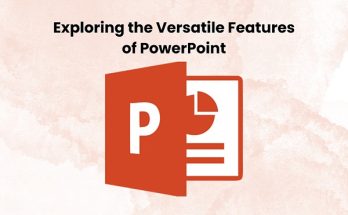E-learning has quickly become one of the most popular methods of learning for people of all ages. There are many reasons why e-learning is better than traditional learning, including convenience, flexibility, affordability, and accessibility.
1. Increased engagement and motivation – studies have shown that e-learning leads to increased engagement and motivation in students, as they are able to learn at their own pace and get immediate feedback on their progress.
2. Greater flexibility – with e-learning, you can access your course materials from anywhere at any time, which means you can study even if you’re not in a traditional classroom setting
3. Improved retention rates – research has shown that e-learning results in improved retention rates of information due to the interactive and engaging nature of online courses
4. Cost-effective – most e-learning platforms are free or offer very affordable pricing plans compared to traditional learning methods
5. More variety of courses available – with traditional learning, you may not have access to the variety of courses that are available online
6. Access to expert instructors – with e-learning, you can access expert instructors from around the world who can provide you with quality education in your field of interest.
E-learning is a type of learning that takes place online, using digital resources such as videos, games, and simulations. Unlike traditional learning methods, e-learning can be accessed anytime, anywhere. It is also often more engaging and interactive, making it easier to retain information.
This type of modern learning is also flexible and scalable, making it an ideal solution for corporate leadership training. Businesses can train large groups of employees quickly and efficiently, without the need for expensive classroom space or equipment. In addition, this can be customized to meet the specific needs of each organization. As a result, e-learning provides a number of advantages over traditional learning methods.
E-learning can be a great way to learn new skills or brush up on existing ones. But how does it work and how can you get the most out of it for your needs?
One of the key benefits of e-learning is that it allows you to learn at your own pace. You can pause and rewind sections as needed, or go back and review topics that you didn’t quite understand the first time around. Additionally, most e-learning courses are interactive, meaning they are more engaging and enjoyable to complete than traditional methods such as reading a textbook.
To get the most out of e-learning, it is important to set realistic goals and have a clear understanding of what you hope to achieve. It is also helpful to create a study schedule so that you can stay on track and avoid feeling overwhelmed by the material. Finally, be sure to take advantage of all the resources available to you, such as forums, chat rooms, and online support groups.
E-learning has become increasingly popular in recent years, as it offers a number of advantages over traditional learning methods.
There are a variety of e-learning materials available to corporate leaders, and each has its own advantages and disadvantages. In order to choose the right material for your needs, it is important to consider the following factors:
– The learning style of your employees: Some people learn best by watching videos, while others prefer to read texts or listen to audio recordings. Consider the learning styles of your employees when choosing e-learning materials.
– The level of engagement required: E-learning materials can be passive or active. Active materials, such as simulations and games, require more engagement from learners but can be more effective in terms of retention. Passive materials, such as readings and lectures, require less engagement but may not be as effective in terms of long-term learning.
– The budget: E-learning materials can range in price from free (e.g., open educational resources) to expensive (e.g., bespoke corporate training courses). Consider your budget when choosing e-learning materials.
Choosing the right e-learning material depends on a number of factors, including the learning style of your employees, the level of engagement required, and the budget. By taking these factors into account, you can choose materials that will be most effective for your needs.
Also Read About: The Top 14 Tips for Getting a Mortgage




